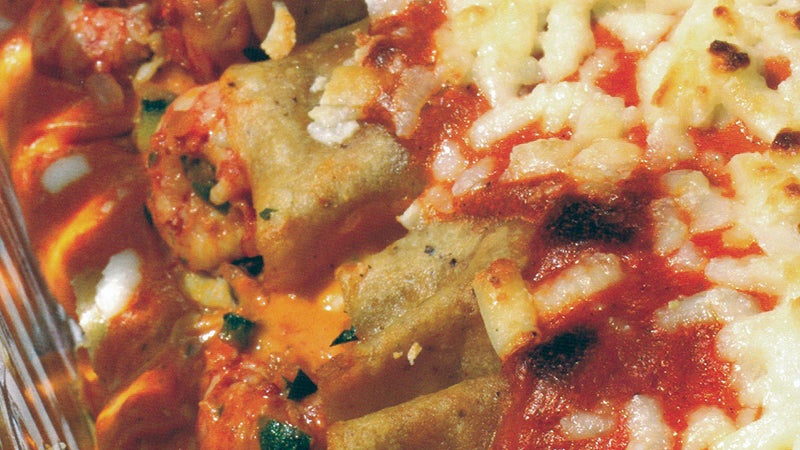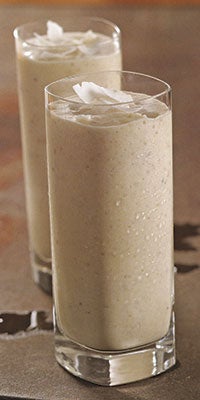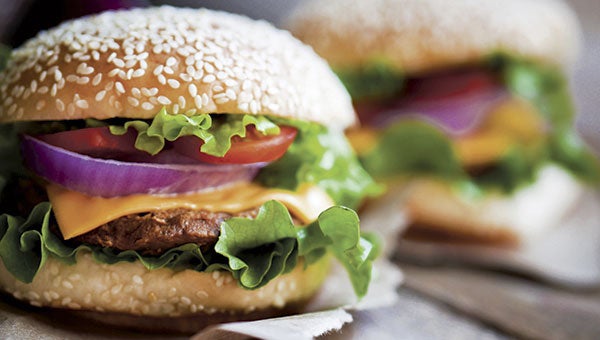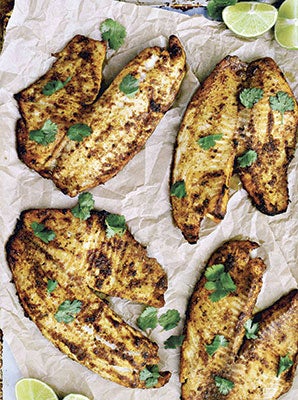Plants aren’t only pretty, they’re good to eat
Published 9:28 am Monday, January 14, 2013
The seed catalogues are coming in now, and it’s time to start planning what to plant for the potager this year. If you haven’t been growing any of your food, think about starting. Herbs are a good place to start. Bay leaves, thyme and rosemary are often called for and these are perennial plants and need little care. They can be easily purchased at a garden center and grown in pots but if you have a place, planting in the ground doesn’t require so much attention with watering. The bay and rosemary can be sizable bushes so plan accordingly. I also grow sage and oregano and chives. Frequently used annual herbs include basil, dill, parsley, and cilantro. Basil is a must for me for the tomato/basil/mozzarella salads of summer. If you use any of these frequently, then fresh from the garden is best.
Some other plants to consider should be citrus. Kumquat (the little tart oranges that are eaten whole) and Satsuma (oranges) can be planted in the ground in this area. I have several lemon trees in pots and they are supplying us with the juiciest lemons this time of year. Figs are not easy to find in the grocery but are easy to grow.
And while we are thinking of fruits and berries, blueberries are healthy; I love them and the bushes have good fall color. Put them in your shrub border with azaleas. Both need acid soil. I just bought some more from a local hardware store. It’s been in business since the 1950s and is now more garden store than hardware. I bought four plants recommended for the deep South: Tifblue, Climax, Premier and Brightwell. I need to remember to keep them watered the first year when it gets hot and dry. I lost my last planting by not doing that.
What else to plant? Things you like and that maybe can’t be bought easily at the store are good bets. If you are growing the vegetables at home you can control the use of pesticides or non-organic fertilizers.
Okra is available commercially but having your own means you can pick it while it is small and tender. I freeze it for doing gumbo in the cooler months when okra is not available. I have been saving seed for several years of Cow Horn. I am again growing a Louisiana heirloom, Stewart’s Zeebest, for a second year. Alabama Red, an Alabama heirloom, could easily go in the flower border.
English peas are best fresh from the garden. I grow Wando ‘recommended especially for southern and coastal regions.’ It is best to provide support. And of course there are snow peas, actually more appropriately called edible podded peas or snap peas. We usually think of stir-fries when we think of snap peas but they are a great side, sautéed briefly in butter or olive oil – salt and pepper.
Field peas, cow peas, Southern peas are easily acquired in season. I like to grow them. I stake them because if left on the ground the chipmunks seem to get too many of the peas. Pinkeye Purple Hull is a good choice and Whippoorwill (grown by Jefferson at Monticello) does well for me.
Butter beans are a favorite of mine. I grow Speckled Calico as it is a large bean. It is a pole Lima so the harvest is extended. This year I was still picking them even after a light frost. Interestingly enough butter beans are not frequently found in the grocery.
Although we think of salads more in the summer, spring is the time we can grow lettuce. Romaine or Cos lettuce is the most nutritious type of lettuce. Jericho, an Israeli introduction, is said to thrive in our hot summers but I think that is stretching it. Rouge D’hiver, a French heirloom, is a pretty lettuce with red tips. I like Bibb or Butterhead types. They are intermediate in nutritional value and less tolerant of heat. Speckled Bibb holds longer in heat. Buttercrunch is another possibility. Loose-leaf lettuce, second to romaine in nutritional value, is generally the easiest type to grow and more heat tolerant. Oakleaf and the old Black Seeded Simpson, that I remember from childhood, are good choices. I am going out on a limb this year and sowing Tennis Ball, a Crisphead, just because Thomas Jefferson, my hero, grew it. I also grow arugula as I like the tang. It self-seeds rather well so I find it all over the place. Selvatica is a wild variety with smaller deeply serrated leaves and it lasts into the heat. It also self-sows. I also like to add in sorrel, a perennial with some lemon taste, and nasturtium leaves and flowers. Nasturtiums tend to vine and can be grown in a hanging basket—but then you have to be sure to keep the basket watered, something I am trying to get away from. Radishes (I like French Breakfast) grow quickly and easily and bunching green onions are also a good addition to your salad.
I like my green beans fresh from the garden and sow saved seed of Rattlesnake. It is a pole bean with an extended harvest. I picked from my vines up till frost last month. Bush beans are an option if you don’t want to stake but the harvest season is short.
Peppers are a staple in my kitchen. Hot peppers are easier to grow than the sweet. I use Jalapeño a lot.
I like sweet banana peppers. Which peppers do you like to use? I am growing another Jefferson choice this year as well – McMahon’s Texas Bird Pepper. It is said to be a good container plant.
Tomatoes: If anyone is going to garden this seems to be the plant. Vine ripened tomatoes are easily available in season but here is your chance to grow a different variety. Heirloom tomatoes are numerous these days. Pick one or two that you will not find in the markets.
I like zucchini and always plant some. We like to eat the blossoms, stuffed or just sautéed and these you can’t buy in the stores so grow squash or pumpkins for the blossoms. The male blossoms have no fruit but you can also eat the female small fruit with their blossom attached.
Another vegetable we like that can’t be found in stores is the luffa sponge. The trick is to pick them before they get too large and tough. This plant does a lot of climbing but has an abundance of yellow flowers.
Cucumbers are a great summer treat. I prefer them raw, sliced onto a green salad or sliced by themselves with salt, pepper and olive oil. Pickling is a trend for 2013 and you can use your excess to pickle. I grew West Indian Gherkins (just because Jefferson did) last year. It is not good raw, but I used it to pickle. Other varieties such as Boston Pickling can be eaten fresh as well as pickled.
Three Species Dill Pickles
(from the Seed Savers Exchange catalogue)
Ingredients:
Enough Mexican Sour Gherkins, Russian Pickling, and West Indian Gherkins (or other cucumber varieties) to fill six (6) pints or three (3) quarts
24 whole black peppercorns
1 garlic head, cloves separated, peeled and chopped
6 hot peppers (suggest Jalapeño)
6 dill heads, along with leaves
3 cups vinegar (cider, white wine, or distilled white)
3 cups water
¼ cup pickling salt
Directions: Leave cucumbers whole. Divide the cucumbers, peppercorns, garlic, hot peppers and dill among the canning jars. Bring the vinegar, water, and salt to a boil, stirring to dissolve the salt. Pour the hot liquid into the jars, leaving ½ inch headspace. Close the jars with two-piece caps. In a boiling water bath, process pint jars for 10 minutes, quart jars for 15 minutes. Store the pickles for at least 1 month in a cool, dry place before eating them. After opening a jar, store it in the refrigerator.
Seeds are cheaper if bought locally but it might be helpful if you can find a store that caters to what does well locally. Pinetree is a good seed source that is cheaper than most mail order. Southern Exposure Seed Exchange and Seed Savers Exchange are more expensive but have nice discussions about their offerings.
As one commentator says “Happy gardening everyone.”





